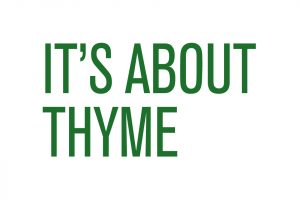[dropcap]I[/dropcap] recently received an Ask Chris email from a gardener wanting to know what to do with the strip of ground between curb and sidewalk in the front of his house.
Traditionally this area is covered with turf grass. However with its location next to the concrete curb, pavement and sidewalk, it is a harsh environment for just about anything to grow in. It’s just about the hottest and driest part of the landscape.
With water restrictions and new irrigation laws in effect (such a...
[dropcap]I[/dropcap] recently received an Ask Chris email from a gardener wanting to know what to do with the strip of ground between curb and sidewalk in the front of his house.
Traditionally this area is covered with turf grass. However with its location next to the concrete curb, pavement and sidewalk, it is a harsh environment for just about anything to grow in. It’s just about the hottest and driest part of the landscape.
With water restrictions and new irrigation laws in effect (such as no overspray on hardscapes), grass stands little chance of survival.
My plan would be to remove the grass. Next add some compost to the native soil, and plant low-growing, water-wise native and adaptive species. As usual it’s a good idea to consult a copy of the Native and Adapted Landscape Plants for a myriad of suggestions. (This booklet is free at most nurseries.)
Always keep in mind the mature sizes of plants. Since this new bed is bordered by street and sidewalk, large, overhanging plants would create traffic problems on both sides. Only choose thorny plants if they’re dwarf and are kept in the center.
This area can be planted sparsely and retain an appealing look. Pick plants with an interesting architecture. Their looks can be enhanced by mulching with decomposed granite or colorful gravels. There is even a mulch of tumbled glass (no sharp edges) that can add greatly to your curb appeal.
Another idea is to define planting areas by adding a faux riverbed of colored river stone. This can snake and serpentine its way between curb and sidewalk with pocket planting throughout.
My favorite small plants with great architectural form are Queen Victoria agave, artichoke agave, and red yucca. These three can form the evergreen backbone of the planting, with additional low-growing flowers placed between and around them… such as blackfoot daisy, four nerve daisy, pink skullcap, purple coneflower, weeping lantana, homestead verbena, cedar sage, green and grey santolena, and bulbine.
There are also some lovely culinary herbs would also perform well in this area: creeping rosemary, sage, Greek oregano, chives, thyme, and Mexican mint marigold.
If you have a question for Chris, send it via email to iathyme@yahoo.com. Or mail a postcard to It’s About Thyme: 11726 Manchaca Road, Austin, TX 78748 www.itsaboutthyme.com











